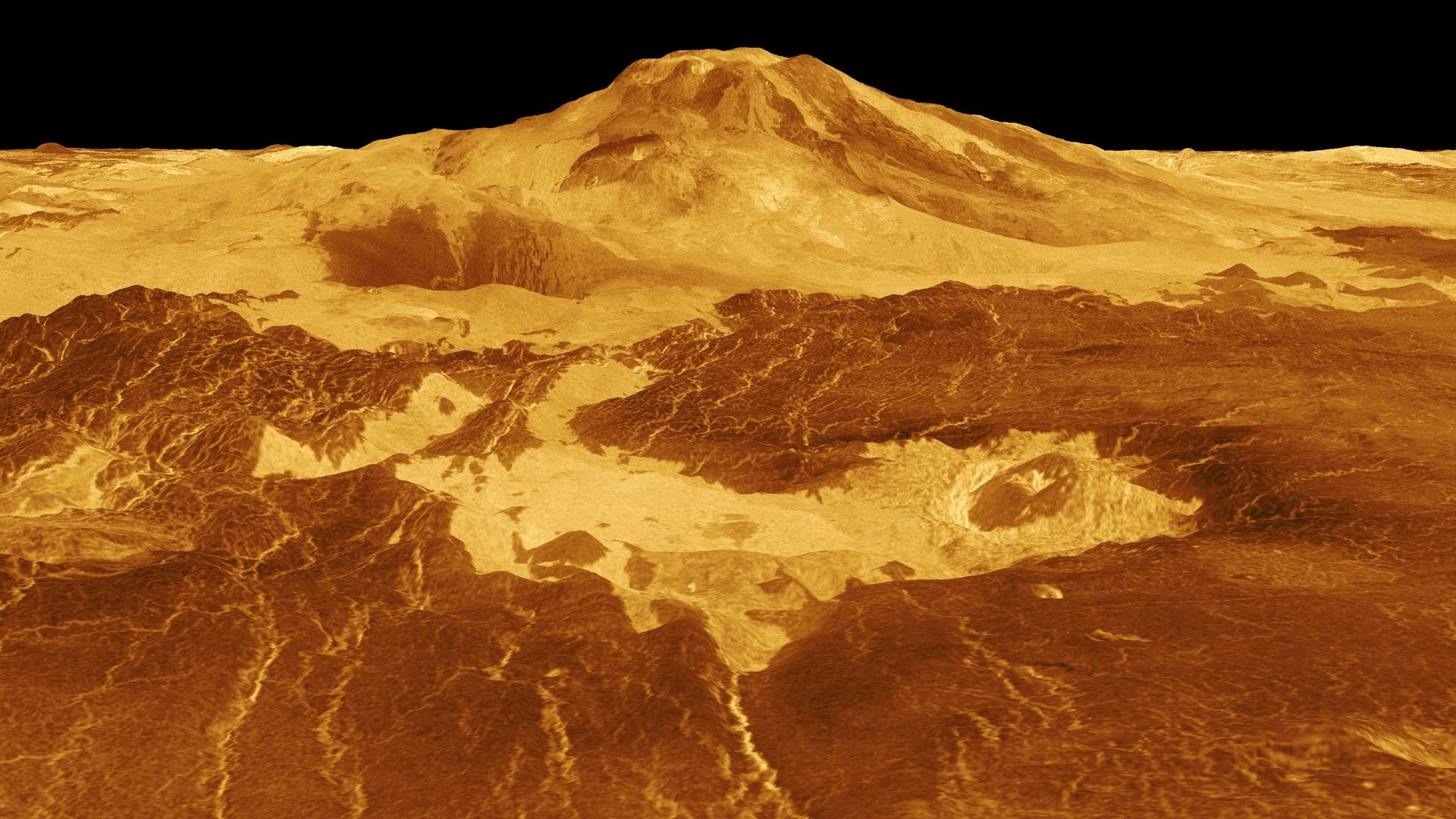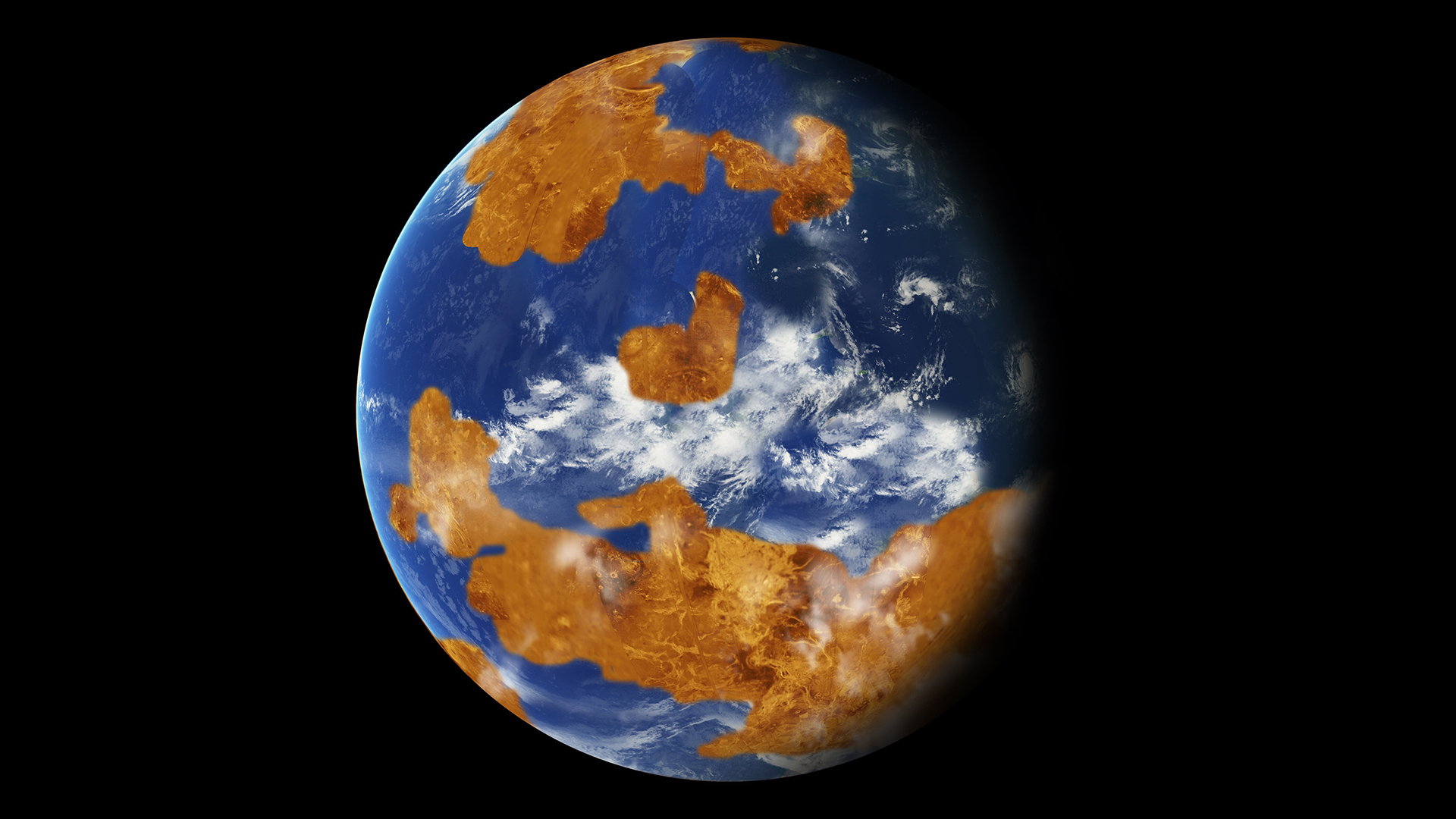Venus: Facts about the hellish planet next door
A round-up of information about Venus.

Venus is a hot and hellish world and the second planet from the sun. The Earth-size planet could be considered our twin if not for its thick, toxic atmosphere and surface temperatures that are hot enough to melt lead.
Despite such extremes, researchers have long wondered if organisms could exist in the upper cloud layers of Venus, where more clement conditions can be found. Controversial data suggest that Earth's sister world in the solar system may not be so different from life-bearing Earth after all.
How did Venus get its name?
Venus' modern name comes from the ancient Roman goddess of love and beauty, according to NASA. After the sun and the moon, Venus is the third-brightest object in Earth's sky, meaning people have known about it since time immemorial.
The ancient Greeks named Venus after their own love goddess Aphrodite, while the ancient Egyptians named the planet for the goddess Isis, according to the European Southern Observatory. Other names for Venus include Astarte (Phoenician), Fria (Saxon), Ishtar (Sumerian) and Jīnxīng (Great White One in Chinese). The Maya considered Venus a god of war and kept careful records of its position in the sky.
What is Venus made of?
Like Earth, Venus is a rocky planet. With a diameter of 7,520 miles (12,100 kilometers), according to NASA, Venus is only a little smaller than our planet, with a mass about 80% of Earth's, according to Live Science's sister site Space.com.
The interior composition of Venus is quite similar to that of Earth; both planets have an iron core surrounded by a hot-rock mantle and a thin outer crust, according to NASA. Venus' surface is covered in a range of geological structures, such as mountains, valleys and volcanoes. It even has continent-like features, including an Australia-size rocky highland area called Ishtar Terra near its north pole, and an even larger, South-America-size region called Aphrodite Terra stretching across its equator.

Venus has very few visible impact craters, suggesting that its surface is relatively young. Mounting evidence suggests that our nearest planetary neighbor is still geologically active, with a partially molten mantle, moving tectonic plates and erupting volcanoes.
Get the world’s most fascinating discoveries delivered straight to your inbox.
The atmosphere of Venus is mainly carbon dioxide and contains thick permanent clouds composed of sulfuric acid, according to NASA. This creates an intense surface pressure more than 90 times that of the Earth and surface temperatures near 900 degrees Fahrenheit (482 degrees Celsius). Water can't exist in liquid form on the surface, and very little water vapor exists in Venus' atmosphere.
How far is Venus from the sun?
Venus is 67 million miles (108 million km) from the sun on average, according to NASA, which is roughly 70% the distance between Earth and the sun. Venus is the nearest planet to our world, coming within roughly 38 million miles (61 million km) at its closest approach.
The length of a year on Venus is 225 Earth days, but because our sister world spins extremely slowly on its axis, its day length is longer than its year — 243 Earth days, according to NASA. The sun rises in the west and sets in the east on Venus because the planet spins in the opposite direction to ours, though nobody knows why.
Have humans explored Venus?
Since the middle of the 20th century, humans have sent multiple probes to fly past, orbit and land on Venus. The first spacecraft to successfully fly by another planet was Mariner 2, which was launched by the U.S. on Aug. 27, 1962, and came within 21,600 miles (34,760 km) of Venus, according to NASA.
The Soviet Union's Venera program, which lasted from the early 1960s through the 1980s, successfully landed 10 probes on Venus and transmitted data from the surface, according to NASA. Venera 7, which launched in 1970, was the first robot to land on another planet and return data, though it lasted only 23 minutes before succumbing to the planet's infernal conditions, according to the agency.

NASA's Magellan spacecraft orbited and mapped Venus' surface in detail in the 1990s, while the European Space Agency's (ESA) Venus Express studied the planet from orbit starting in 2006. Finally, the Japanese Venus Climate Orbiter, also known as Akatsuki, has been studying the planet's atmosphere since 2015.
In 2022, NASA released stunning images taken as the Parker Solar Probe flew past Venus. They were the first visible-light images of the planet, revealing its surface features, including continents, plains and mountain ranges.
Still, Venus is relatively understudied compared with planets such as Mars. But in the near future, Venus will be visited by many new spacecraft, including NASA's upcoming Deep Atmosphere Venus Investigation of Noble Gases, Chemistry and Imaging (DAVINCI) and Venus Emissivity, Radio Science, InSAR, Topography and Spectroscopy (VERITAS) missions, according to Space.com. ESA also plans to fly its Venus-exploring EnVision probe sometime in the 2030s.
Is there life on Venus?
Although Venus' surface has long been seen as inhospitable, researchers have speculated that living creatures could potentially survive in an upper cloud layer where temperatures average 86 F (30 C). The possibility was given a major boost in 2020, when astronomers announced that they had detected a chemical called phosphine in this upper cloud layer.
Phosphine is a very simple molecule that, on Earth, is produced only by living organisms and human activity. No known non-living processes could readily explain the presence of phosphine on Venus. But the finding was not without controversy, with other scientists saying that the detection could be erroneous or that there might be some unknown process producing phosphine on Venus.
Subsequent searches for phosphine haven't seen it in the same quantities as the original discovery. Further studies have also pointed out that the amount of water on Venus is so low that even the most drought-tolerant terrestrial microbes would struggle to survive and that the planet may have suffered from such a lack of water into the distant past.
For the time being, claims of life on Venus remain tantalizing but inconclusive and will require data from future probes to study in more detail.

Additional resources
- You can read a list of different missions to Venus and details about their explorations from The Planetary Society.
- This NASA interactive website will let you fly around Venus from orbit and study it from many different angles.
- An amazing bevy of stunning images of the hellish planet can be found courtesy of NASA's Jet Propulsion Laboratory.
Bibliography
Bartels, M. (2022, March 11). Scientists hail 'the decade of Venus' with 3 new missions on the way. Space.com. https://www.space.com/venus-scientists-celebrate-new-missions-lpsc
Choi, C., Gohd, C., & Dobrijevic, D. (2022, April 1). Venus: The scorching second planet from the sun. Space.com. https://www.space.com/44-venus-second-planet-from-the-sun-brightest-planet-in-solar-system.html
European Southern Observatory. (2007, April 3). Venus in mythology. https://www.eso.org/public/outreach/eduoff/vt-2004/Background/Infol2/EIS-D9.html
European Space Agency. (n.d.). Venus Express. Retrieved April 19, 2022, from https://www.esa.int/Enabling_Support/Operations/Venus_Express
Japan Aerospace Exploration Agency. (n.d.). Venus Climate Orbiter Akatsuki. Retrieved April 19, 2022, from https://akatsuki.isas.jaxa.jp/en
NASA. (2019, August 11). Mariner 2. https://solarsystem.nasa.gov/missions/mariner-02/in-depth/#:~:text=In%20Depth%3A%20Mariner%202&text=The%20mission%20proved%20to%20be,14%2C%201962.
NASA. (2021, August 3). Venus. https://solarsystem.nasa.gov/planets/venus/in-depth
NASA. (2022, February 10). Venus: Overview. https://solarsystem.nasa.gov/planets/venus/overview/

Adam Mann is a freelance journalist with over a decade of experience, specializing in astronomy and physics stories. He has a bachelor's degree in astrophysics from UC Berkeley. His work has appeared in the New Yorker, New York Times, National Geographic, Wall Street Journal, Wired, Nature, Science, and many other places. He lives in Oakland, California, where he enjoys riding his bike.


